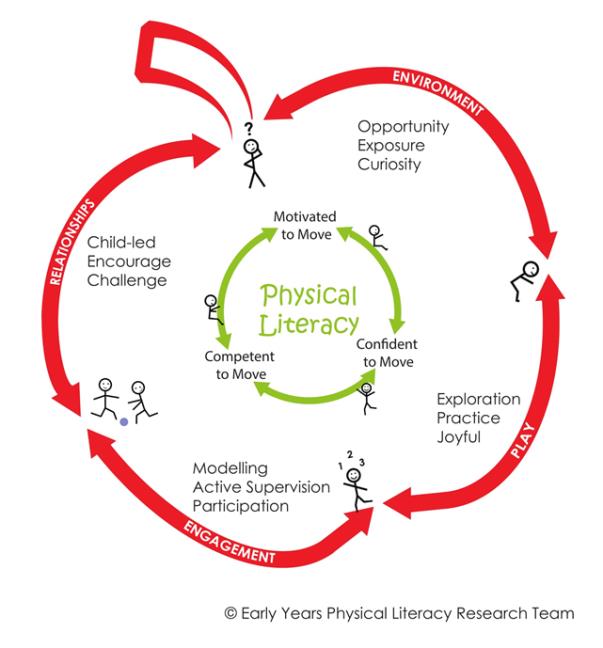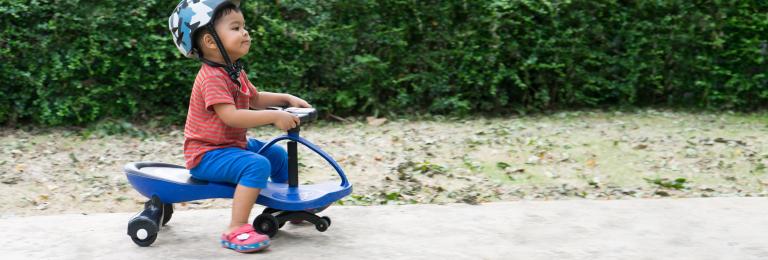APPLE Model
The APPLE (Active Play and Physical Literacy Every day) model was designed by Mount Royal University’s Centre for Child Well-being and shows how closely the concepts of physical literacy align with active play. The model illustrates how the influence of environmental stimulus and the decisions that early years providers make in terms of programming can have a profound effect on the child’s ability to develop physical literacy.
In the model, physical literacy forms the core of the apple, with the skin of the apple representing factors that early years providers can influence.

Environment
Creating an environment that allows for exposure to different movements, and opportunity to try things new, as well as allowing for curiosity over movement and how things work. This can be done by providing elements of different heights for climbing and jumping, pieces of equipment that wobble and move and lots of time to play.
Play
When children are playing, the play should encourage exploration of the environment and equipment, involve lots of repetition of movements (for example, by consistently providing the same equipment like a hockey stick and ball) to allow for practice, with the emphasis on fun and participation.
Engagement
Staff and all adults should have an engaged involvement with the children’s play. This means actively supervising the children during play, making suggestions to the children about different ways to move (“have you tried doing that backwards?”). This also means that the staff/adults should try to role model a healthy, active lifestyle, as well as the movements the children are trying to achieve. This can be achieved through active participation in games and activities, as well as structuring and leading games and activities.
Relationships
The relationships formed through play and with play should be child-led, with adults providing options for the child to challenge themselves. This can be by running faster, jumping further or hitting a smaller object. The adults should also provide encouragement and feedback on movements so that the child can learn and build confidence. Feedback should be specific, and avoid general statements such as “good job”.
If these elements are put in to practice, the children will develop confidence in movement, the ability to move well and the motivation to keep moving, which is physical literacy.
For more information, go to www.earlyyearsphysicalliteracy.com
